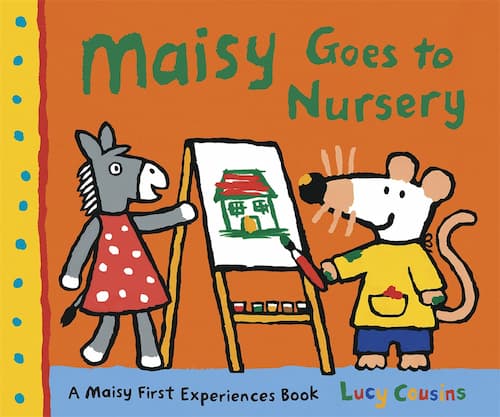We have teamed up with Walker Books to provide these top tips on Maisy Goes to Nursery storytelling in early years.

Why is storytelling important?
Developing a love of stories and storytelling in a child’s earliest years provides a foundation for reading and enjoying stories. The impact of this can last into adulthood.
It helps children to develop:
- Receptive and expressive language
- Sequencing skills
- Thinking skills and problem solving
- Attention span and listening
- Creativity and imagination
- Phonological awareness and grammar.
The benefits of reading to children include:
- Learning about the world we live in, other cultures and people
- Supporting social and emotional development – learning about handling thoughts, feelings and relationships
- Explore challenging topics in a safe way
- Introducing a range of vocabulary
- Developing imagination
- Enabling children to make links between stories and their own experiences
- Enjoying the humour and fun that stories can bring.

It is important that children encounter adults who enjoy telling stories, who can bring a story to life and make it exciting!
Top storytelling tips:
For stories to be fun and exciting children need adults that enjoy telling stories, adults who can bring the story and characters to life.
It can be quite intimidating to sit down in front of a group of children and read a story if you don’t have much practice or if you don’t feel confident doing so.
Observing an experienced storyteller is a great way to help you develop your own skills. We have also provided some tips below to help you think about how you can make your stories exciting for children:

To make a story exciting and fun you can:
- Read through the story a few times before you read it to children so you feel confident with how the story develops and identify the different characters and voices you can use
- Use your voice and tone to set the scene and create an atmosphere
- Build anticipation and introduce surprises
- Use facial expressions
- Use your whole body to tell the story
- Move around the room and go outside if this is appropriate to the story
- Use your voice to develop characters and introduce sounds
- Vary the pace, speed and volume as appropriate
- Use props to make the story come to life
- Encourage the children to join in with repeated phrases
- Add pauses into your story so that children fill in the missing word/phrase
- Relax and enjoy the storytelling activity.
To help you tell the Maisy Goes to Nursery story in your setting, Walker Books has created a storytelling kit filled with hints on creating a space, actions, and props.
Maisy™
© 1994-2021 Lucy Cousins
Published by Walker Books Ltd. All rights reserved. www.walker.co.uk

